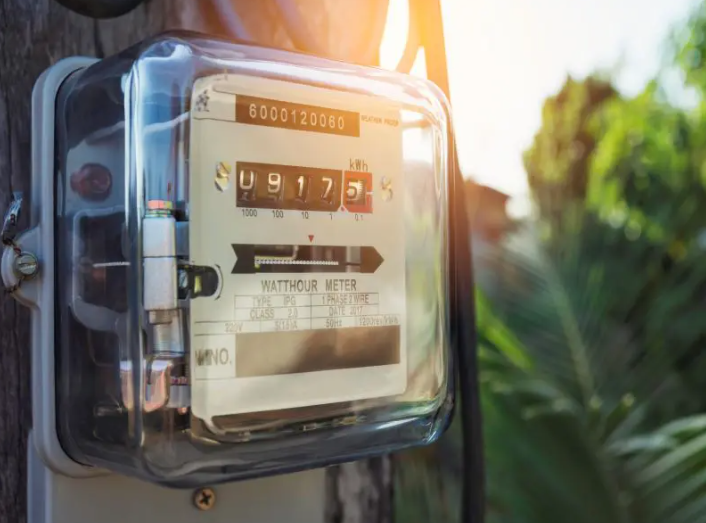Communication protocols are a set of guidelines and patterns that specify how messages are transmitted between pieces of hardware and software. Protocols should briefly describe the communication format and should include data, address, authentication, error detection, and correction. DLMS is one of many communication protocols that have been created to satisfy various needs. The following are some typical standards-based communication protocols that are employed in business and in applications for smart metre: IEC 62056-21 (Ozellikle Mod C), DNP3, IEC 870-5-101/102/103, IEC 61850, Modbus, Profibus, CANBus, and DLMS.
DEVICE LANGUAGE MESSAGE SPECIFICATION (DLMS) PROTOCOL
The primary international standard for smart energy metering, control, and management is DLMS/COSEM (also known as IEC 62056). It contains standards for object-oriented data models, application layer protocols, and media-specific communication profiles. The DLMS COSEM smart metering protocol can be used for various utilities including gas, water, and heat, and is not just for electricity metering. The International Electrotechnical Commission (IEC) has adopted the set of standards, which were created and maintained by the DLMS User Association (DLMS UA), and included them in the IEC 62056 series of standards.
Three essential components make up DLMS/COSEM:
- Companion Specification for Energy Metering (COSEM) is an object model that can describe practically any application.
- Object Identification System (OBIS) serves as the naming system for the objects.
- Device Language Message Specification (DLMS) is the application layer protocol that converts the data stored in the objects into messages.
Any utility or energy kind, any market sector, any application, and almost any communication medium can use DLMS/COSEM.
COMPANION SPECIFICATION FOR ENERGY METERING (COSEM)
Language semantics are explained in the COSEM object model. Although sufficiently general to model any application, COSEM interface classes and their instantiations (objects) are easily utilized to describe use cases for energy management, including metering. A strong tool for formally representing basic or complicated data is object modeling. An attribute is used to model each aspect of the data. Objects can have a variety of properties and methods to manipulate those attributes. Combinations of objects can be used to depict both straightforward use cases like register reading and more intricate ones like tariff and billing systems or load management.
OBJECT IDENTIFICATION SYSTEM (OBIS)
The naming scheme for COSEM objects is called OBIS. Electricity, gas, water, heat cost allocators (HCAs), thermal energy metering, as well as abstract data unrelated to the type of energy measured, are all covered by the OBIS rules. The OBIS’ hierarchical structure enables the data’s attributes, such as electrical energy, active power, integration, tariff, and billing period, to be categorized.
DLMS/COSEM APPLICATION LAYER SERVICES
The DLMS services define the syntax of the language. The Head End Systems or concentrators are the clients in the client-server model used by DLMS/COSEM, and the end devices, typically metres, are the servers.
The DLMS/COSEM application layer offers the following:
- The xDLMS services to access the data stored by the COSEM objects.
- The ACSE services link clients and servers.
Each object receives the same xDLMS services, allowing for the addition of new objects to the model without disrupting the application layer. The application layer also handles message construction (APDUs or Application Protocol Data Units), cryptographic protection application, verification, and removal as needed, and block transfers of lengthy messages. Then, the messages can be transmitted over almost any communication medium. Several built-in procedures are available to optimize traffic to the media’s characteristics.
In accordance with IS 15959, the DLMS data exchange protocol is chosen for smart metres, which also includes unique specifications for smart metres at the application layer. This promotes metre interoperability among various metre brands. The goal of the DLMS protocol testing is to confirm that the protocol is implemented in the metre and that the data from different object identification systems (OBIS) are accurate. The smart metre data sharing protocol must adhere to IS 15959.
ADVANTAGES OF DLMS/COSEM
- The DLMS/COSEM standard enables users to use a generic driver to connect to a variety of metre types from multiple manufacturers.
- It offers a layer for processing application layer requests and responses without regard to the communication profile. As a result, the application layer may handle a wide range of communication profiles, including HDLC and IPv4.
- All utilities and energy types, all market niches, all applications, and just about any kind of communication can use DLMS/COSEM.
- The interface model defined by DLMS/COSEM is applicable to all forms of energy, including electricity, gas, water, and heat.


